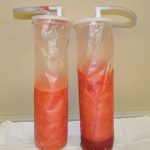Liposuction remains the single most commonly performed body contouring procedure. If for no other reason than the omnipresent of fat throughout the body, it represents the largest surface area procedure performed in any type of known surgery. Because fat is extracted, there are numerous misconceptions about the fat that is removed as well as the fat that is left behind. These are the three most common ones that I hear in my Indianapolis plastic surgery practice.
Weight Loss does not equal Fat Removed

Fat can return to Liposuction-treated Areas
One of the most common myths that is widespread is that once fat is removed by liposuction it can not return there. This myth is similar to the one that we are born with a only a certain amount of fat cells. Both are false. Fullness and fat can definitely ‘return’ to treated area through existing fat cell enlargement as well as new fat cell recruitment through stem cell conversion. Certain fat sites, however, are less prone to this than others. Primary depot sites like the abdomen and flanks (men and women) and the buttocks and thighs (women) are prime targets for reaccumulation because they are trunk depot sites. This is an inborn genetic tendency to protect and insulate the central trunk area. Peripheral sites, like the arms, knees, and neck, are less likely as fat in this area is not primarily there for insulation and protection.
The bottom line is…liposuction results are only as stable as that of your weight. If you gain weight, it is more likely than not to come back from whence it came.
Liposuction does not cause Weight Redistribution
Patients commonly believe that if you treat one area with liposuction, it will cause fat to ‘shift’ and move to other areas. Or if weight is gained, it will cause fat to accumulate in new areas. This is based on the false theory that there is some overriding fat homeostatic mechanism that tries to keep fat distribution in balance. And this belief also emanates from the misconception about only a certain amount of existing fat cells in the body.
There is no scientific basis for this belief of fat redistribution. I have heard it enough times from patients that it is certainly an urban myth. But such a phenomenon has never been reported in the plastic surgery literature. It probably comes from what may happen when weight gain occurs after liposuction surgery in some patients. Numerous body areas get bigger but the liposuction-treated areas take more to become more visible, thus the belief that other areas preferentially are accumulating more fat.
Barry L. Eppley, M.D., D.M.D.
Indianapolis, Indiana


